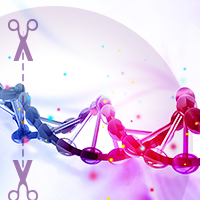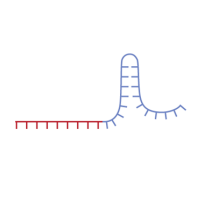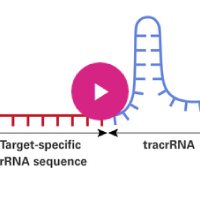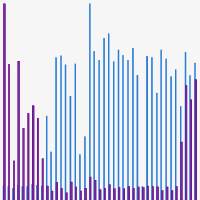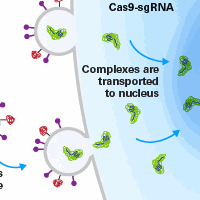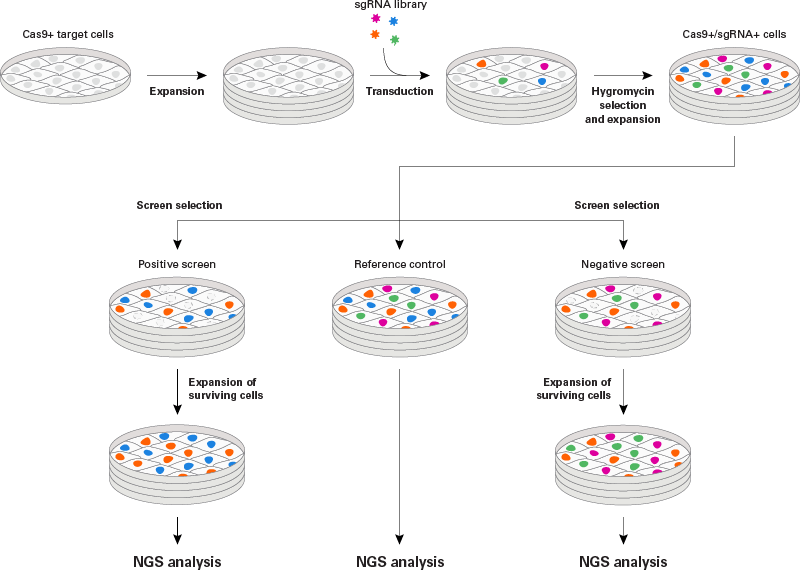Xfect RNA Transfection Reagent for CRISPR/Cas9-mediated gene editing
Xfect RNA Transfection Reagent efficiently delivers mRNA coding for Cas9 and a single guide RNA (sgRNA) directed against your target gene to a wide variety of mammalian cells for CRISPR/Cas9-mediated gene editing. Transfection with RNA precludes genomic integration that often follows transfection with plasmid DNA. While most transfection reagents can be harmful to your cells, the Xfect RNA Transfection Reagent has very low cytotoxicity.
Xfect RNA Transfection Reagent efficiently delivers mRNA coding for Cas9 and a single guide RNA (sgRNA) directed against your target gene to a wide variety of mammalian cells for CRISPR/Cas9-mediated gene editing. Transfection with RNA precludes genomic integration that often follows transfection with plasmid DNA. While most transfection reagents can be harmful to your cells, the Xfect RNA Transfection Reagent has very low cytotoxicity. This reagent creates biodegradable nanoparticles when combined with RNA, enabling efficient transfection of mammalian cells without any damaging cytotoxic effects.
The Xfect RNA Transfection Reagent can also be used for transfection with microRNA and siRNA. The protocol is simple, and transfections can be carried out entirely in the presence of serum.
When used in conjunction with the Xfect Transfection Reagent, the Xfect RNA Transfection Reagent can be used for efficient cotransfection of mammalian cells with both DNA and RNA.
Overview
- Single reagent for transfection with messenger RNA (mRNA), single guide RNA (sgRNA), microRNA (miRNA), and siRNA
- High-transfection efficiency and very low cytotoxicity in cell lines and primary cells
- Simple, serum-compatible protocol
- Complete system that includes all components necessary for transfection
More Information
Applications
- CRISPR/Cas9 editing
- RNA transfection
- Transient transfection without genomic integration
Additional product information
Please see the product's Certificate of Analysis for information about storage conditions, product components, and technical specifications. Please see the Kit Components List to determine kit components. Certificates of Analysis and Kit Components Lists are located under the Documents tab.
CRISPR/Cas9 information
Choosing sgRNA design tools
Browse a collection of sgRNA design tools for Cas9-based genome editing experiments.
Choosing a target sequence for CRISPR/Cas9 gene editing
Learn how to design sgRNA sequences for successful gene editing.
The CRISPR/Cas9 system for targeted genome editing
Overview of CRISPR/Cas9 system for genome editing.
CRISPR/Cas9 genome editing tools
An overview of tools available for each step in a successful genome editing workflow.
Gene editing technical notes
Delivery of Cas9 and sgRNA to mammalian cells using a variety of innovative tools.
SNP engineering application note
Learn about a simple assay for sensitive detection of single-nucleotide substitutions in bulk-edited or clonal cell populations.
CRISPR/Cas9 gesicles overview
Learn about Guide-it CRISPR/Cas9 Gesicle Production System components and workflow.
CRISPR library screening webinar
Watch this webinar to learn how you can perform genome-wide lentiviral sgRNA screens easily.
Choosing an HDR template format
Watch a webinar on how to choose the right HDR template for knockin experiments.
Guide-it SNP Screening Kit FAQs
Get answers to frequently asked questions and view a video explaining the enzymatic assay.
Takara Bio USA, Inc.
United States/Canada: +1.800.662.2566 • Asia Pacific: +1.650.919.7300 • Europe: +33.(0)1.3904.6880 • Japan: +81.(0)77.565.6999
FOR RESEARCH USE ONLY. NOT FOR USE IN DIAGNOSTIC PROCEDURES. © 2025 Takara Bio Inc. All Rights Reserved. All trademarks are the property of Takara Bio Inc. or its affiliate(s) in the U.S. and/or other countries or their respective owners. Certain trademarks may not be registered in all jurisdictions. Additional product, intellectual property, and restricted use information is available at takarabio.com.



